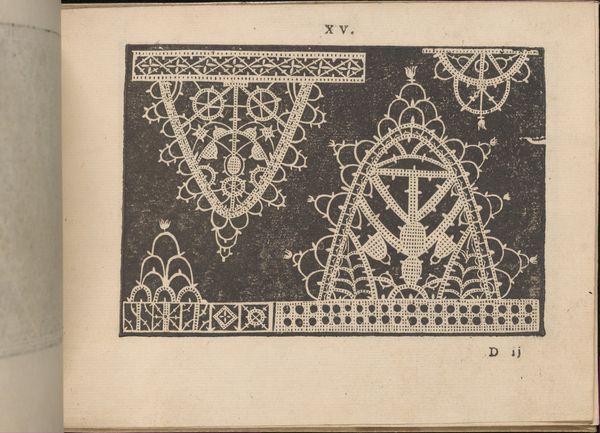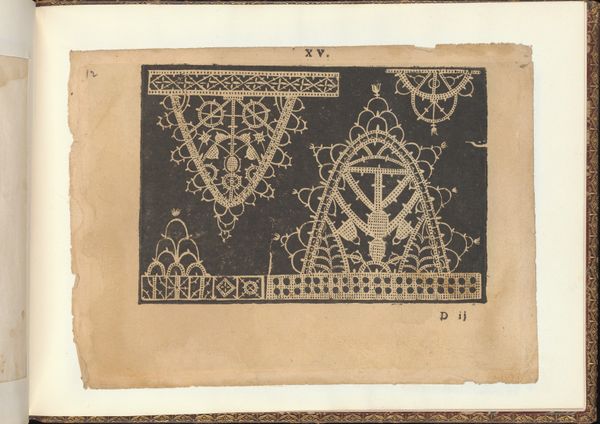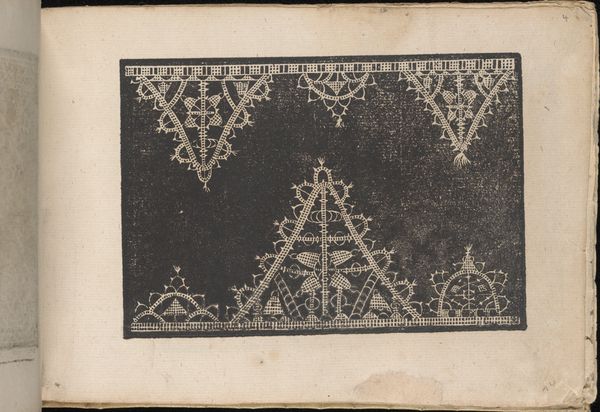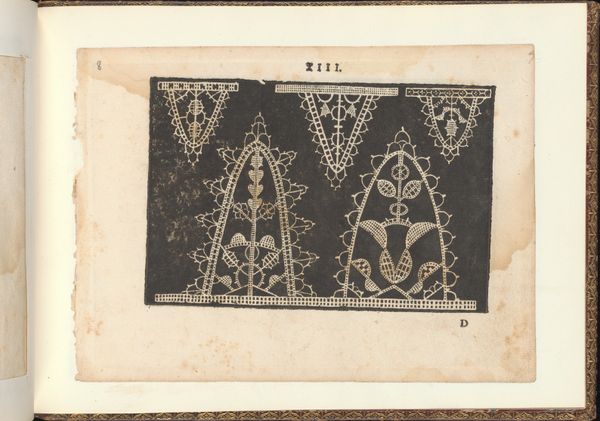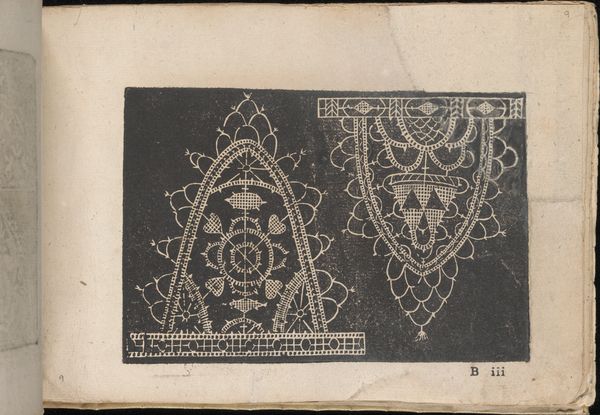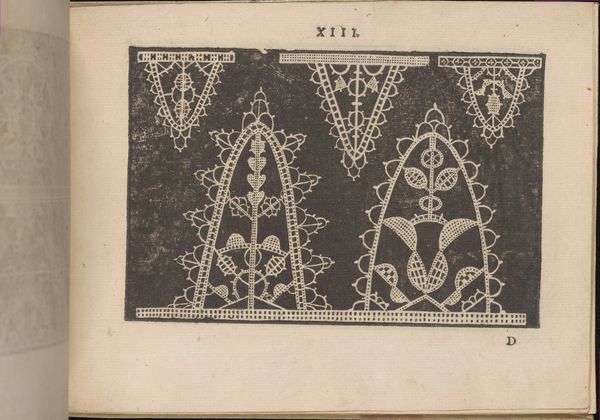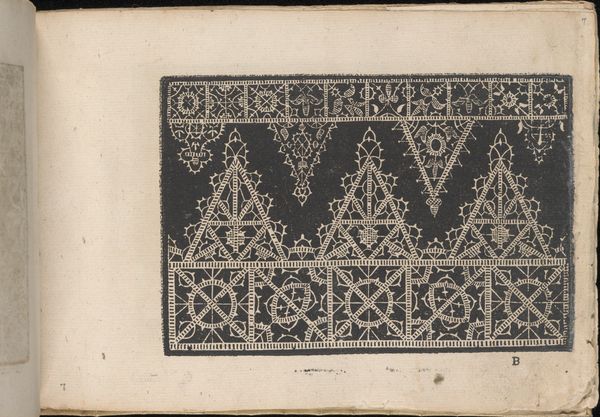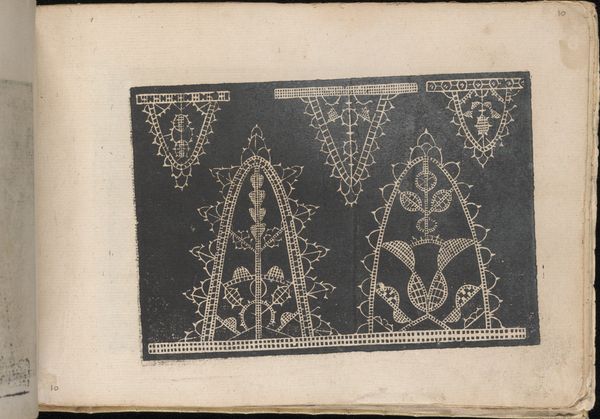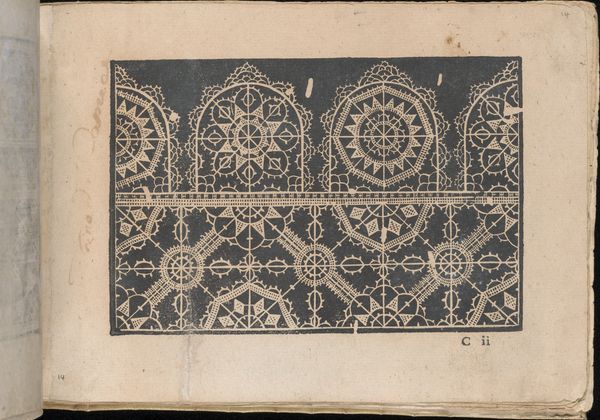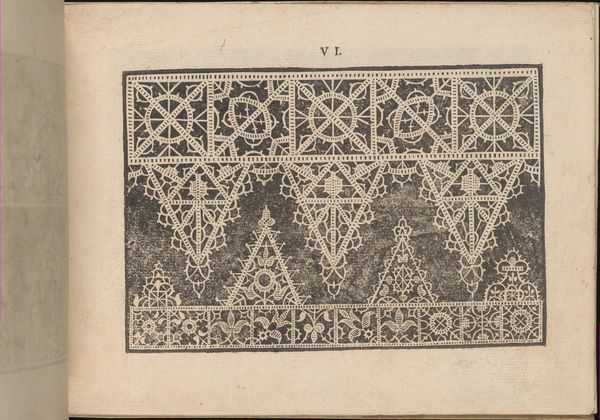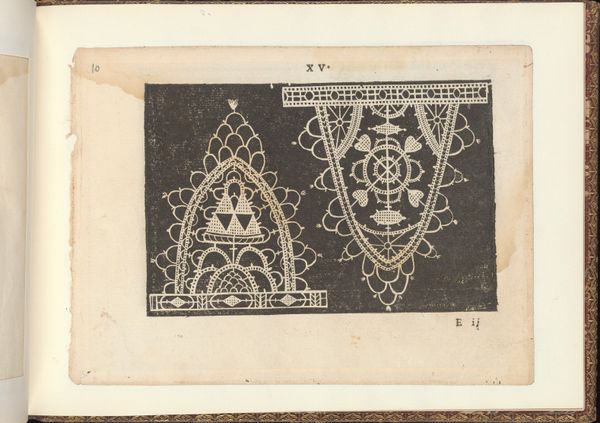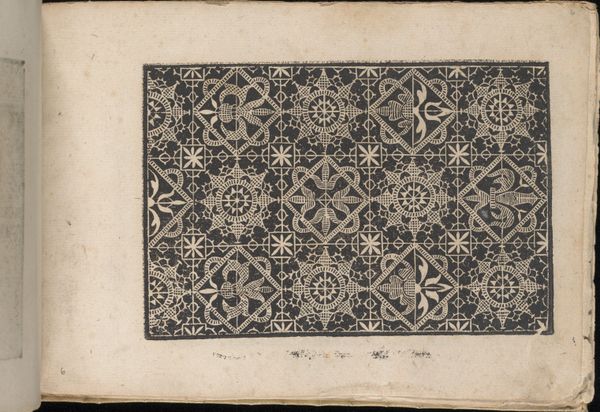
Fiori di Ricami Nuovamente Posti in Luce, page 3 (recto) 1591
0:00
0:00
drawing, ornament, print
#
drawing
#
ornament
#
toned paper
# print
#
11_renaissance
Dimensions: Overall: 5 1/2 x 7 7/8 in. (14 x 20 cm)
Copyright: Public Domain
Curator: This drawing presents such a striking contrast! The dark background makes these delicate white designs leap off the page. Editor: Indeed. What we're observing is actually a page—specifically, page three—from "Fiori di Ricami Nuovamente Posti in Luce," or "Embroidery Designs Newly Brought to Light," a print dating back to 1591 by Matteo Florimi. Currently, this piece calls the Metropolitan Museum of Art home. Looking at it now, do we understand its placement within history, within systems of knowledge? Curator: Absolutely, I see these patterns as far more than mere decoration. During the Renaissance, sumptuary laws often restricted elaborate clothing to the elite. Lace, therefore, becomes a visible signifier of status, of power. These books enabled a wider dissemination of such designs, subtly challenging those hierarchical norms. This allows the consumers to perform identity. Editor: Interesting! I would say that Matteo Florimi, through this print and others like it, directly engages with the social and economic realities of 16th-century Italy. We can contextualize his prints within the burgeoning textile industry. They served as vital pattern books for artisans, playing a direct role in shaping the aesthetic landscape of the era. It is imperative we understand the institutional influence that enabled the artist’s works to surface at this time. What were the printing practices like at this time? How did Florimi find his viewership? Curator: Right, but consider, too, the potential agency these designs offered women. Embroidery was a widely practiced skill, and pattern books like this would provide them with means of expressing their creativity, adding unique flair. Editor: These designs demonstrate the skill, taste, and refinement that women used to occupy themselves in social and creative engagements. Curator: Examining this from that perspective lets me imagine all these designs gracing so many homes in ways we cannot conceive today. Thank you! Editor: A refreshing outlook.
Comments
No comments
Be the first to comment and join the conversation on the ultimate creative platform.
